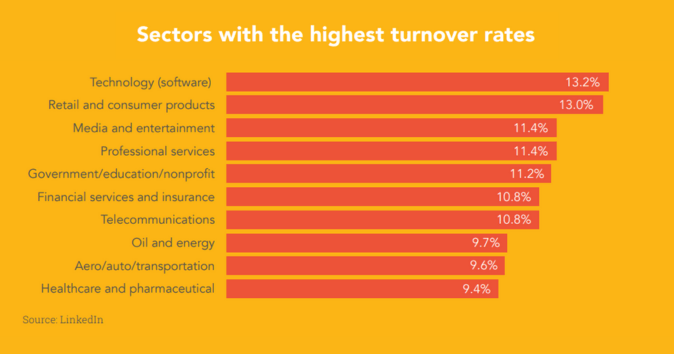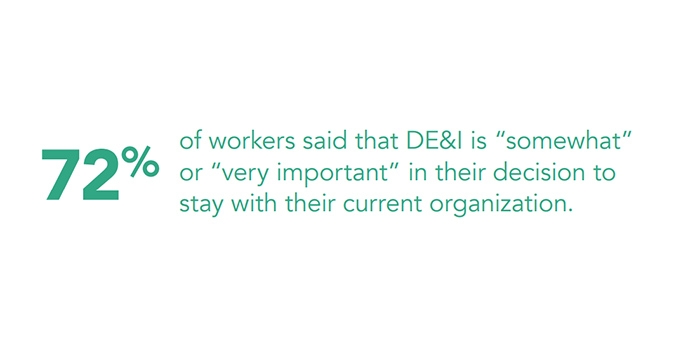Internal and External Sources of Recruitment: Examples & Benefits
Table of contents
- What is an internal recruiting source?
- What are the advantages of internal sources of recruitment?
- What are the disadvantages of internal recruiting?
- What are the examples of internal recruiting sources?
- What is an external recruitment source?
- What are the benefits of external recruiting sources?
- What are the disadvantages of external recruiting?
- What are the examples of external recruiting sources?
- What are the main differences between internal and external sources of recruitment?
- FAQs

As the world of work continues to evolve, recruiters are constantly seeking better, more effective ways of hiring new candidates. One fundamental question that often arises during these discussions is whether or not hiring externally vs internally is more beneficial.
Read on to explore the pros and cons of both sources, as well as learn when it may be better to favor one channel over the other.
What is an internal recruiting source?
An internal recruiting sourceOpens in a new tab is a method of finding candidates who are already employed within the organization. The two main methods of internal recruiting are promotions and internal transfers. In a promotion, an employee "moves up" to a position with more responsibilities and generally, a higher salary. In an internal transfer, an existing employee moves from one department to another.
What are the advantages of internal sources of recruitment?
Internal recruiting can have many positive effects, including:
Increasing retention
It's no surprise that employees who are unhappy with their managers or in their roles may be interviewing with other companies and looking to leave the company. However, giving these employees a refreshed opportunity to succeed, either through a promotion or an internal transfer, can encourage them to stay at the company for longer. This is a great way to improve employee turnover rates.

For more information on how to attract and retain top talent, check out our Employee Retention Checklist.
Helping with cost savings
Recruiting internal talent costs significantly less than sourcing external candidates. The money saved on those costs can be used for professional development opportunities for employees or improving employee training.
Boosting morale
Not only do internal promotions motivate the employees who earn them and feel recognized for their hard work, but they can also inspire the rest of the workforce. By making positive examples of these employees by giving them the promotions they deserve, leadership is communicating to their staff that diligent work will be recognized and rewarded.
What are the disadvantages of internal recruiting?
The disadvantages of internal sources of recruitment are as follows:
Limited pool of talent
Only assessing job applications from within your organization may severely limit the pool of candidates your team has to pull from. Choosing solely from your internal candidates may limit your company's chance of finding the individual who is truly the best fit for the job.
Internal politics
Because of the social politics that exist within any company, promoting from within may cause jealousy, hurt feelings, or lead employees to believe that the same workers are treated more favorably than others.
What are the examples of internal recruiting sources?
Internal recruitment strategies usually include:
Internal advertisements
These can be disseminated through email blasts, newsletters, Slack, or internal job boards, such as Greenhouse. The intention of these advertisements is to make existing employees aware of job vacancies so they can apply for these open roles or refer other qualified candidates within the organization. Seeking internal hires can also help you battle high employee turnover rates in your company.
Promotions
One of the most mutually beneficial ways for employers to fill a vacant position is by promoting an existing employee. Not only does this help the company fill the open role faster, it also eliminates the ramp-up time needed to train an external candidate, and boosts morale for other employees on the team.
Promotions are a great way to recognize the talent that already exists within your team. Also, having better employee retention makes the recruitment process more efficient for everyone involved. No one wants to be employed at a "revolving door" organization, and your recruitment team doesn't want to be constantly filling the same positions.
Transfers
Internal transfers can be a great way to retain top talent who may be feeling unhappy or unfulfilled in their roles. By finding roles or managers that are a better fit for these employees within the organization, companies can greatly reduce employee turnover in their company.
What is an external recruitment source?
An external recruitment source is a way of finding new employees from outside the organization. Seeking out external hires through job boards, recruiting agencies, and other means can help keep fresh, new talent in the organization.
What are the benefits of external recruiting sources?
There are some great advantages to using external recruiting sources, such as:
Access to a more diverse talent pool
Being open to job applicants from outside the organization can help your company find employees from different locations and backgrounds who may have vastly different work experiences. Creating a more diverse team can help your company ideate more creatively and try new things.

Fresh perspectives
Because it usually increases the level of diversity in your organization, external recruiting is bound to bring in fresh, new perspectives. Bringing totally new people into the organization can also be very revitalizing for existing employees who may feel frustrated with the current team structure or stuck in a rut.
What are the disadvantages of external recruiting?
Seeking potential candidates from outside sources may also have some negative aspects, including:
Higher recruitment costs
External recruitment methods generally cost more money than internal ones. In order to identify the right candidates and fill the position to the best of their ability, recruiters may need to invest more in their searches.
Longer adjustment period
Because these employees are coming into the organization with no knowledge whatsoever of how things work, there is often a significant amount of ramp-up time necessary when they begin their new roles.
What are the examples of external recruiting sources?
External candidates are generally sourced through one of the following:
Advertisements
These advertisements are in print, such as classic job postings and want ads, or digitally, such as on each company's individual Careers page. Some nontraditional means may include TV and radio advertisements or even social media.
Job boards
Hiring managers can easily find qualified job applicants through sites like LinkedIn, Indeed, BuiltIn, or Otta. These sites allow recruiters to post job descriptions, find and reach out to additional qualified applicants, and even track applications.
Employment agencies
Employment agencies can be especially effective, especially for larger companies. By outsourcing their hiring efforts, companies can save extensive amounts of time, allowing them to direct their energy elsewhere.
What are the main differences between internal and external sources of recruitment?
The chart below shows a clear breakdown of some of the key differences between these two processes of recruitment:
FAQs
Why do organizations prefer internal sources of recruitment?
For many organizations, it can feel less "risky" to invest in employees whose work ethic they've already seenOpens in a new tabfirsthand. It also costs much less to pull from internal candidates than from external ones. Lastly, employees who are already familiar with the organization need much less ramp-up time in their new roles than workers who are coming in from outside organizations.
What are the best sources for effective external recruitment?
The popularity of digital job boards like LinkedIn makes them one of the most effective external sources in today's world of work. Since so many people are active on these sites, it's much easier for job seekers who align with your company's needs and corporate culture.
Wrapping up
There are extensive pros and cons to both internal and external recruitment sources. By identifying your team's needs, you can evaluate internal vs. external strategies and create a customized hiring process that works best for your current employees and new hires alike.
About the author
Anna Picagli
As an RYT500 yoga instructor and a Reiki Master Teacher, Anna is an advocate for holistic wellness, especially within the workplace. She’s extremely passionate about the brain-body connection and exploring how mental and physical wellness intersect.
Anna has experienced firsthand how chronic stress, overworking, poor management, and other organizational issues can lead to extreme burnout. Knowing the impact that a toxic work environment can have on a person’s body, psyche, and general sense of well-being, she now works to direct others away from facing the same fate.
As Workhuman’s Senior Content Specialist, Anna is a regular contributor to Workhuman iQ reports and aims to create resources that company leaders can reference to help improve their culture and empower their employees, creating healthier workplaces for everyone.
In her free time, she’s an avid solo traveler, a voracious reader, and a seasoned home chef. You can learn more about Anna’s work on LinkedIn or through the Yoga Alliance.